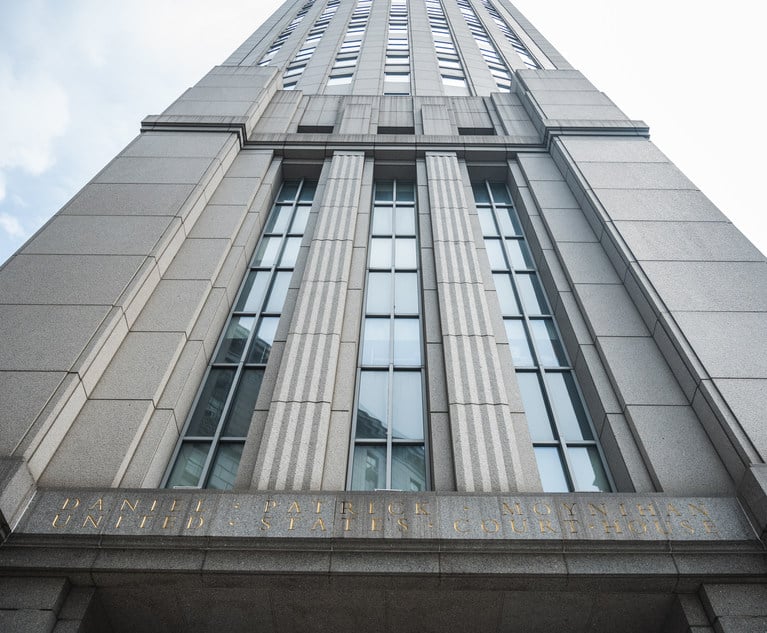 Erin Applebaum, left, and Taylor Sandella, right, of Kreindler & Kreindler. Courtesy photos
Erin Applebaum, left, and Taylor Sandella, right, of Kreindler & Kreindler. Courtesy photos Rough Skies Ahead: Legal Options for Turbulence Injuries
Recent severe turbulence events have caused serious injuries and deaths to passengers, generating an upswing in public interest over a natural phenomenon that is now more dangerous than ever before.
July 16, 2024 at 10:00 AM
8 minute read
Whether you're a casual traveler or a frequent flyer, you've likely encountered rough air at some point in your jet setting. You know the feeling: the aircraft starts to tremble, your drink sloshes in your glass, and your stomach lurches up and down in sync with the jerking aircraft until the air becomes smooth again. Throughout aviation history, turbulence events overwhelmingly resulted in no more than mild anxiety and annoyance to passengers. But as the climate changes, commercial flights are encountering turbulent skies with markedly increased frequency. Recent severe turbulence events have caused serious injuries and deaths to passengers, generating an upswing in public interest over a natural phenomenon that is now more dangerous than ever before.
NOT FOR REPRINT
© 2025 ALM Global, LLC, All Rights Reserved. Request academic re-use from www.copyright.com. All other uses, submit a request to [email protected]. For more information visit Asset & Logo Licensing.
You Might Like
View All
So Who Won? Congestion Pricing Ruling Leaves Both Sides Claiming Victory, Attorneys Seeking Clarification
4 minute read
Decision of the Day: Administrative Court Finds Prevailing Wage Law Applies to Workers Who Cleaned NYC Subways During Pandemic

NY's Top Court Mulls Fate of Personal Injury Claims Against NJ Transit Corp.

Amendments to Federal Lawsuit Against BusPatrol Prompts Call for Rule 11 Sanctions
Trending Stories
- 1Letter From London: 5 Predictions for Big Law in 2025, Plus 5 More Risky Ones
- 2Crypto Groups Sue IRS Over Decentralized Finance Reporting Rule
- 3Jenner Brings Back Zachary Schauf from DOJ's Office of Legal Counsel
- 4'Erroneous Assumption'?: Apple Challenges DOJ Antitrust Remedy in Google Search Monopoly Case
- 5A Jury to Determine Whether Stairs Were Defectively Designed in Injury Case, State Appellate Court Rules
Who Got The Work
Michael G. Bongiorno, Andrew Scott Dulberg and Elizabeth E. Driscoll from Wilmer Cutler Pickering Hale and Dorr have stepped in to represent Symbotic Inc., an A.I.-enabled technology platform that focuses on increasing supply chain efficiency, and other defendants in a pending shareholder derivative lawsuit. The case, filed Oct. 2 in Massachusetts District Court by the Brown Law Firm on behalf of Stephen Austen, accuses certain officers and directors of misleading investors in regard to Symbotic's potential for margin growth by failing to disclose that the company was not equipped to timely deploy its systems or manage expenses through project delays. The case, assigned to U.S. District Judge Nathaniel M. Gorton, is 1:24-cv-12522, Austen v. Cohen et al.
Who Got The Work
Edmund Polubinski and Marie Killmond of Davis Polk & Wardwell have entered appearances for data platform software development company MongoDB and other defendants in a pending shareholder derivative lawsuit. The action, filed Oct. 7 in New York Southern District Court by the Brown Law Firm, accuses the company's directors and/or officers of falsely expressing confidence in the company’s restructuring of its sales incentive plan and downplaying the severity of decreases in its upfront commitments. The case is 1:24-cv-07594, Roy v. Ittycheria et al.
Who Got The Work
Amy O. Bruchs and Kurt F. Ellison of Michael Best & Friedrich have entered appearances for Epic Systems Corp. in a pending employment discrimination lawsuit. The suit was filed Sept. 7 in Wisconsin Western District Court by Levine Eisberner LLC and Siri & Glimstad on behalf of a project manager who claims that he was wrongfully terminated after applying for a religious exemption to the defendant's COVID-19 vaccine mandate. The case, assigned to U.S. Magistrate Judge Anita Marie Boor, is 3:24-cv-00630, Secker, Nathan v. Epic Systems Corporation.
Who Got The Work
David X. Sullivan, Thomas J. Finn and Gregory A. Hall from McCarter & English have entered appearances for Sunrun Installation Services in a pending civil rights lawsuit. The complaint was filed Sept. 4 in Connecticut District Court by attorney Robert M. Berke on behalf of former employee George Edward Steins, who was arrested and charged with employing an unregistered home improvement salesperson. The complaint alleges that had Sunrun informed the Connecticut Department of Consumer Protection that the plaintiff's employment had ended in 2017 and that he no longer held Sunrun's home improvement contractor license, he would not have been hit with charges, which were dismissed in May 2024. The case, assigned to U.S. District Judge Jeffrey A. Meyer, is 3:24-cv-01423, Steins v. Sunrun, Inc. et al.
Who Got The Work
Greenberg Traurig shareholder Joshua L. Raskin has entered an appearance for boohoo.com UK Ltd. in a pending patent infringement lawsuit. The suit, filed Sept. 3 in Texas Eastern District Court by Rozier Hardt McDonough on behalf of Alto Dynamics, asserts five patents related to an online shopping platform. The case, assigned to U.S. District Judge Rodney Gilstrap, is 2:24-cv-00719, Alto Dynamics, LLC v. boohoo.com UK Limited.
Featured Firms
Law Offices of Gary Martin Hays & Associates, P.C.
(470) 294-1674
Law Offices of Mark E. Salomone
(857) 444-6468
Smith & Hassler
(713) 739-1250






